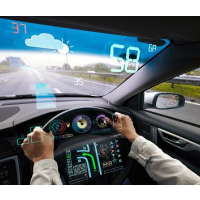New Technologies are Biggest Source of Car Complaints for Drivers
 (graphic: Coney/Jay/Stone/Getty Images)
(graphic: Coney/Jay/Stone/Getty Images)
By Cheryl Jensen, New York Times
Craig Sakowitz could be considered a technologically adept driver. As an e-commerce project manager for the Gap in San Francisco, he often rents cars and relies on hands-free technologies to get work done.
But that’s when he can make them work. When he rented a car recently, he had problems with the Bluetooth system.
“I’m a technology guy, and I couldn’t figure out how to get my phone paired to the car,” he said. “And once I was connected, it seemed like it would randomly decide to either connect or not connect.”
The road to the autonomous future, it seems, is not as smooth as it appears. Problems related to cars’ rapidly advancing technology are now at the top of the list of consumer complaints, according to the 2016 J.D. Power Vehicle Dependability Study.
The biggest issues are balky voice recognition systems and problems with Bluetooth pairing, accounting for 20 percent of all customer complaints. Overall, the discontent drove a 3 percent decline in vehicle dependability in the study.
“That’s a pretty big shift,” said Renee Stephens, vice president for U.S. automotive at J.D. Power.
She added that problems like those with Bluetooth suggest that automakers face a challenge as they introduce increasingly sophisticated technologies in cars.
“It begs the question, can this vehicle handle all the interactions that have to happen in order to get me from Point A to Point B without my involvement?” Stephens said.
Complaints about technology have gone from being fifth most troublesome in the 2014 study, to third last year, to now being first.
The vehicle dependability study, which is closely watched in the industry, measures problems experienced during the last 12 months by the original owners of three-year-old vehicles. In this case, the study covered 2013 models; in that model year, many newer technologies were becoming more common in cars.
Of owners who had a problem with Bluetooth pairing and connectivity, 53 percent said the vehicle did not find or recognize their mobile phone or device. Among those who had a problem with voice recognition, 67 percent said the system did not recognize or misinterpreted verbal commands.
And the problems are not limited to communications. Another J.D. Power study found that owners of cars with blind-spot monitoring had been getting false readings in which the system said it was safe to change lanes when it was not, and the other way around.
If automakers don’t get it right, “consumers will not trust that they can take their hands off the wheel and their eyes off the road,” Stephens said.
Some of the problems with these technologies may be because of operator error, said Mark Boyadjis, an analyst at IHS Automotive.
“It is naive for anyone to think they can get into a vehicle that has 100 million lines of code, 10 times more than that of a Boeing 787 Dreamliner, and operate it without having to do any learning,” he said. “That said, it does not mean an automaker is fine with making systems overly complex. If you don’t care about designing with the user in mind, you are going to lose.”
Overall dependability is determined by the number of problems experienced per 100 vehicles. The lower the score, the higher the quality. The overall industry average for dependability was 152 problems per 100 vehicles, compared with 147 problems in last year’s study.
One reason for the increase, Stephens said, is that more 2013 models have in-vehicle communications than did the 2012 models in last year’s study.
And problems that owners had with these systems when they first bought the vehicles were still bothering them three years later, despite software patches meant to fix them.
The challenge for automakers is that there is a range of systems in vehicles, a range of phones and a range of drivers, each with its own quirks, said Karl Brauer, senior analyst for Kelley Blue Book.
“Technology keeps moving and adding more capability, which keeps the manufacturers running to integrate these new things to be competitive,” he said. “But then they are redoing the interface so that all those new things can be added, versus having an interface that’s fairly stable for a few years in a row.”
The study covered 177 specific problem symptoms grouped into eight major vehicle categories such as exterior, driving experience and engine and transmission. This year’s study was based on the survey responses of 33,560 owners, and 32 brands were included in the brand rankings.
In those rankings, Lexus was the most reliable brand for the fifth consecutive year. The Buick Verano, with 77 problems per 100 vehicles, was the most reliable vehicle, a first for a nonpremium model.
After Lexus (with 95 problems per 100), brands that rounded out the top 10 were Porsche (97), Buick (106), Toyota (113), GMC (120), Chevrolet (125), Honda (126), Acura (129), Ram (129), Lincoln (132). At the bottom of the rankings was Dodge (208), in 32nd place.
- Top Stories
- Unusual News
- Where is the Money Going?
- Controversies
- U.S. and the World
- Appointments and Resignations
- Latest News
- Musk and Trump Fire Members of Congress
- Trump Calls for Violent Street Demonstrations Against Himself
- Trump Changes Name of Republican Party
- The 2024 Election By the Numbers
- Bashar al-Assad—The Fall of a Rabid AntiSemite






Comments